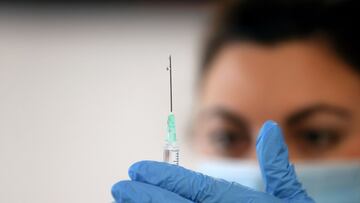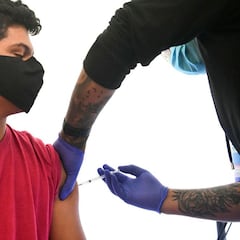Where won't you have to wear a mask after the vaccine and in what cases?
As new information becomes available, the CDC updated guidance for fully vaccinated people, including changes for mask-wearing and social distancing.


On 11 May, during a hearing for the Senate Committee of Health, Education, Labor, and Pensions, Maine Senator Susan Collins told CDC Director Rochelle Walensky that she “Always considered the CDC to be the gold standard," but after seeing the agencies response to the pandemic, she doesn't anymore.
The Senator's criticism stems from what she sees as the confusion created by the delays in the agency adjusting their public health guidance. Part of the Senator’s argument is based on how the agency has released information for fully vaccinated individuals.
A day after these criticisms by Sen. Collins and other Republican committee members were launched, the CDC released updated information for fully vaccinated people. This builds on early guidance, and the main changes relate to mask-wearing and social distancing. As of 13 May, the CDC states that fully vaccinated people can “resume activities without wearing a mask or staying 6 feet apart.” There are certain exceptions to the rule, as individuals must comply with the laws in their state or regulations implemented by businesses and other organizations for their workers and customers.
Today’s announcement on masks, while overdue, is certainly a step in the right direction, and I am pleased to see the CDC finally take action to align its guidance with the recommendations of scientific experts.
— Sen. Susan Collins (@SenatorCollins) May 13, 2021
These changes were made based on findings from a few scientific studies that show that fully vaccinated people are unlikely to transmit the virus to others. This was a critical question that many public health experts had hoped would allow the government to ease certain restrictions. The CDC updated their scientific information saying, “a growing body of evidence suggests that fully vaccinated people are less likely to have asymptomatic infection and potentially less likely to transmit SARS-CoV-2 to others.” These findings are encouraging as more and more residents in the US receive their vaccines. In addition to lowering the transmission, there is a growing body of evidence that suggests all available vaccines demonstrated high efficacy in reducing chances a patient would have to hospitalized or develop fatal symptoms from the virus.
How does the CDC update its guidance?
Throughout the pandemic, as more science and data becomes available, the CDC has updated its guidance. The situation created by the pandemic is unlike anything the country has experienced in nearly a century. The scientific methods and technologies available today allow epidemiologists and public health experts to more quickly study the infection and alert the public on the necessary precautions, but these processes still take time. The CDC justifies the pace at which they release new guidance, saying that their decisions are based on the best science available, and these processes cannot be rushed.
UPDATE: If you are fully vaccinated against #COVID19, you can resume activities without wearing a mask or staying 6 feet apart, except where required by federal, state, local, tribal or territorial laws, incl. local business and workplace guidance. More: https://t.co/FJMon7WlFO
— CDC (@CDCgov) May 13, 2021
Related stories
It is not the responsibility of the CDC to appease the public and release guidance that may make them feel better in the short term. While anecdotal evidence may be attractive to make policy, that is not the job of the CDC. The CDC, as a science-based organization, must ensure that the data aligns with guidance, regardless of the guidance may be received. Safety is the priority, and while timeliness plays a role, it is not the principal motivating factor in how the CDC releases new information.
What questions remain?
In addition to guidance on masks and social distancing, the CDC also altered the list of questions they are investigating. This revised list includes topics related to the efficacy of vaccines in reducing the spread of variants, how immunocompromised individuals differ in their immune response after being vaccinated, and how long the vaccines provide protection.

